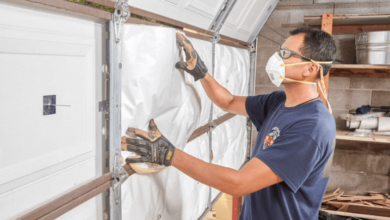Elevate Your Walls: Fresh Perspectives on Dado Rail Design

In the realm of interior design, details make the difference. Among the myriad ways to add character and depth to your living spaces, dado rails stand out as both a nod to classic architecture and a canvas for modern creativity. Also known as chair rails, these decorative features encircle the perimeter of a room at waist height, originally intended to protect walls from furniture scuffs. However, with the evolution of interior aesthetics, dado rails have transcended their practical purpose, emerging as a significant element in room design. This article explores fresh perspectives on dado rail design, offering innovative ideas to elevate your walls and overall room aesthetic.
The Fusion of Function and Form
While the protective role of dado rails remains relevant, especially in homes bustling with activity, their aesthetic potential is limitless. By incorporating dado rails, you create a visual boundary that can break up large wall spaces, making them feel more structured and interesting. But how do you ensure that this classic feature fits seamlessly into contemporary interiors? The answer lies in the creative interplay of colors, textures, and materials.
Color Contrasts and Combinations
One of the simplest yet most striking ways to utilize dado rails is through color contrast. Painting the wall area above and below the dado rail in contrasting colors adds instant visual interest and depth to the room. For a more subtle effect, opt for different shades of the same color. This technique not only highlights the architectural feature but also allows for dynamic color schemes that can change the perceived dimensions of a room.
Read also: The Backbone of Scientific Research: Understanding the Importance of Laboratory Hotplates
Textural Play
Beyond color, texture plays a pivotal role in dado rail design. Consider the interplay of different wall textures as a way to delineate spaces. For instance, wallpaper above the dado rail paired with a matte paint finish below can create a rich, tactile experience. Alternatively, wood paneling beneath the rail adds warmth and a touch of rustic charm to a space, contrasting beautifully with smooth painted surfaces above.
Material Innovations
While traditional dado rails are crafted from wood, modern materials offer a new level of design flexibility. Metals, polymers, and even recycled materials can be shaped into rails that fit any interior style, from industrial chic to minimalist modern. These materials can introduce new textures and finishes to walls, providing a contemporary twist on a classic feature.
Creative Applications
Dado rails need not be confined to their conventional role. Think outside the box by using them as ledges for picture frames or small decorative items, adding a personal touch to your space. In open-plan homes, dado rails can serve as subtle dividers between different functional areas, marking transitions without interrupting the flow.
The Power of Lighting
Incorporating lighting elements with dado rails can transform the ambiance of a room. LED strips installed along the rail can cast a soft, indirect light, highlighting the feature while adding a warm glow to the space. This approach not only accentuates the dado rail’s design but also enhances the overall mood of the room.
Conclusion
Dado rails offer a unique opportunity to blend tradition with innovation in home design. By experimenting with colors, textures, materials, and uses, you can elevate your walls and imbue your spaces with personality and style. Whether you’re refurbishing a historic home or decorating a new build, consider how dado rails can add depth, character, and a fresh perspective to your interior design project.




